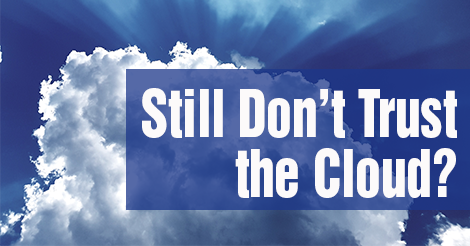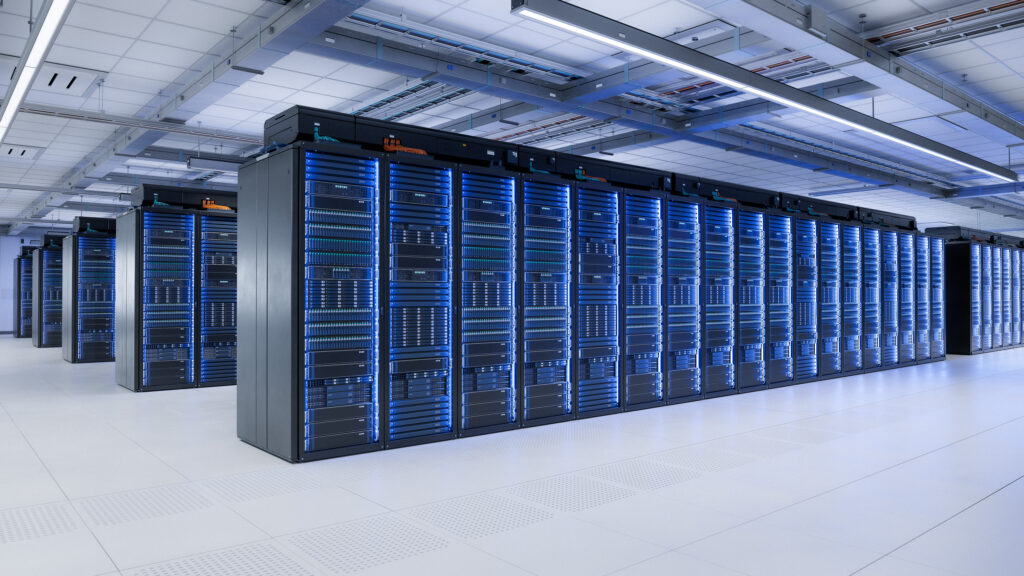It’s been argued that “cloud computing” has been around for well over 70 years.
If that doesn’t instill a little bit of trust in you, the rest of this article should!
Alright, maybe it’s been 70 years, maybe it hasn’t. The concept of cloud computing was certainly acknowledged in the 1960s and has since become an omnipresent service for both businesses and personal households. If you're reading this, you're likely aware that we're not discussing the vast, billowy clouds in the sky. You probably have an idea that the "cloud" we're referring to here is some sort of technological entity that stores information. You're not wrong here, but there are deeper layers to it, especially when it comes to entrusting it with your most valuable data. Just a friendly reminder that in the business world, "the cloud" is commonly known as Hosted or SaaS (software as a service).
Where is the information stored?
With the cloud, data typically resides on servers housed by the vendor offering the service at a physical office space or, more likely, at a dedicated data center. Data centers are essentially storage spaces for servers and hardware.
Check out this article later if you want to know what a server is.
Any given data center will have servers on-site with information from a variety of different places – they could house servers with sales data from a wholesale distribution business employing cloud-based ERP, they could house servers belonging to government bodies with administrative information, and they could house servers with financial information being stored from other businesses around the world.
Geographic consideration is also important. For example, in North America, it makes sense to have data centers located on both the East and West coasts to further mitigate risk in the case of a geographical catastrophe or event.
Given that data centers are in the business of keeping data safe and secure, they will have their own processes and security measures in place in conjunction with what a vendor has. These safety measures include:
- Data Centre Security
- Disaster Prevention
- Redundancy
- Automatic Failover
Data Centre Security - A good data center will offer multiple levels of security for physical entry to the building such as Biometric scanning, PIN code, access card etc. and 24/7 monitoring to ensure the servers and data are secure.
Disaster Prevention - Back-up power generators as well as state-of-the-art fire detection and suppression systems are all imperative in buildings where servers are being managed.
Redundancy - To ensure the highest level of security possible for your data, most data centers and cloud providers will have several fail-safes in place. These can include multiple power supplies, processors, hard drives per server and multiple data backup locations. A bonus is the option to keep a copy of your data in-house as well.
Automatic Failover - Utilizing backup servers that seamlessly take over in case of a server failure ensures uninterrupted business operations in the face of a total server breakdown. For software providers, this is essential for their clients' businesses to continue running smoothly.
How do you access the cloud?
One common method is a web-based system in which a user types in a URL and then enters login and password information to use the software via a specific website. Think about your personal banking here or your subscription to streaming platforms like Netflix. In the world of business software, you are probably familiar with QuickBooks or Shopify.
You can also connect remotely to cloud-based systems via RDP. RDP stands for “remote desktop protocol” and is a Microsoft-licensed technology available for a large range of computers, tablets and other devices, including most Windows and Mac computers, iPads and iPhones, Android devices, and systems running Linux or Unix. Essentially, RDP allows a user at a remote computer to log into a server or a specific computer on a network over an internet connection. Once logged in, the remote user has access to that server or computer as if they were sitting in front of it.
In your personal life, the choice between remote desktop protocol and web-based platforms is often limited to what is available. However, when it comes to your business, you have the power to choose. Both approaches offer numerous benefits, such as the ability to access a Windows program from an iOS device or a Mac, and the capability to run software that demands powerful processors and ample memory from a minimally configured workstation.
Who owns the data?
When it comes to personal information stored on the cloud, (we'll use Netflix subscriptions as an example), you have the power to request a copy of the data stored by the company. This encompasses your personal payment and billing details, as well as your interaction history. Don't just take our word for it – reach out directly to the service provider if you want to delve deeper into the storing of your information.
Although with cloud-based solutions your data is physically located outside of your organization, it is still owned by your company. Backups can also be deployed locally and in the event that your business decides to move systems or close operations, it should be very easy to get your data back from the vendor in question (assuming they are willing to cooperate).
So, is your data safe?
When it comes to safeguarding your data, the primary focus lies on security and risk management, as well as privacy and proper information usage. Based on the information provided, it is evident that the cloud excels in ensuring the security of your data.
From a personal perspective, it is encouraged to recognize the privacy terms and conditions before submitting sensitive information.
From a business perspective, there are several benefits to choosing cloud-based services. In addition to the above benefits, there is no large upfront cash outlay, infrastructure costs are pushed to the provider, you receive increased access to expert support (in lieu of an IT department), and don’t have to worry about backups. But one of the biggest benefits of employing a cloud-based solution is that your data is often far safer than it ever would be if you kept it on-location at your place of business
The Future of the Cloud
As we look ahead to the future, the growth of cloud-based technologies shows no signs of slowing down. Recent projections indicate that the global SaaS market is on track to reach an impressive $1,554.94B by 2030, a substantial increase from its 2022 value of $483.98B. The cloud has firmly established itself as a secure and reliable solution, offering people and businesses a flexible and efficient way to store and manage their data and operations. With its proven track record, it's clear that the cloud is here to stay and will continue to revolutionize the way we work.











